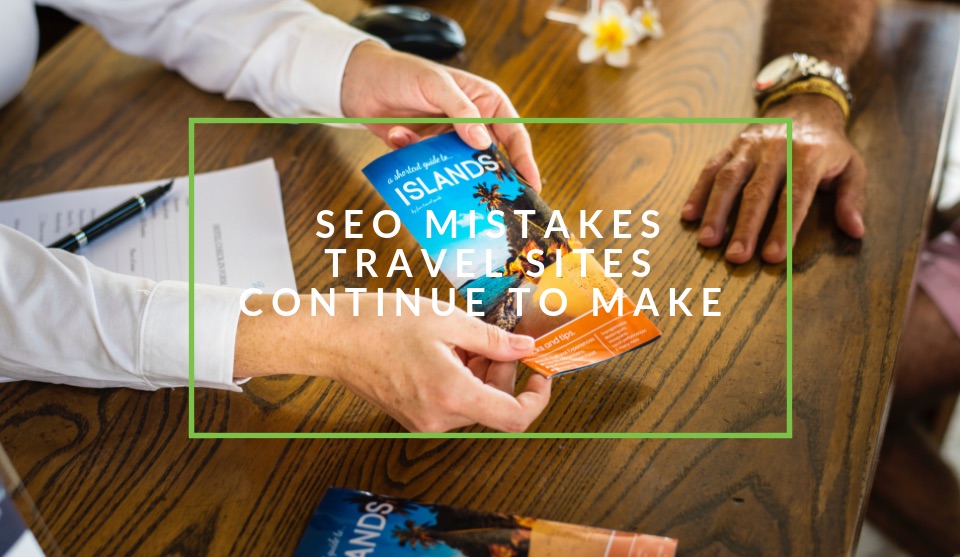Recent posts

Money Talks
Why Cross-Border Payments Are Slow, Tedious, and Expensive
17 December 2025

Money Talks
The Rise Of Trading Platforms In South Africa
16 December 2025

nichemarket Advice
The South African VAT Threshold Chokehold
05 December 2025

Doctors Orders
The Difference Between SOAP Notes and DAP Notes
02 December 2025
Popular posts
Extravaganza
Trending Music Hashtags To Get Your Posts Noticed
24 August 2018
Geek Chic
How To Fix iPhone/iPad Only Charging In Certain Positions
05 July 2020
Extravaganza
Trending Wedding Hashtags To Get Your Posts Noticed
18 September 2018
Money Talks
How To Find Coupons & Vouchers Online In South Africa
28 March 2019
Top SEO Mistakes Travel Sites Make & How To Fix Them
06 February 2019 | 0 comments | Posted by Che Kohler in Hit the Road
At nichemarket, we love helping businesses of all shapes, sizes and industries take advantage of the internet and digital marketing. We continuously aim to improve their online reputation and effectively bring in regular high-quality leads.
One of our favourite industries to work in has been travel, and we've optimised a number of travel agency sites, hotel sites, tour operators sites, travel blogs get more traffic and leads. As a result, we've happened to come across some interesting trends when it comes to travel-related sites, and in an interest of helping the community as a whole, we thought it would be helpful to share out findings.
We realise travel is a very competitive space to be in when offering your services online and any every bit helps make your offering more competitive and move you up the rankings.
Travel is still eCommerce
This is probably the most common travel site mistake I come across. Travel sites often feel they are different from eCommerce sites and do not draw inspiration from the templates eCommerce sites use to sell their products. eCommerce product pages were designed in a specific format because customers can understand it, feel comfortable with the format and most importantly know how to convert.
I've come across many travel sites with stunning product pages meant to captivate the visitor, but they do not convert especially on mobile where smaller screens make it harder to showcase your efforts.
How to fix
Simplify your product pages and make sure they cover the following
- Product title
- Product image
- Booking or search call to action
- Product description
- Travel information
- Testimonials, user comments & ratings
- Related products or products bought together
- Packages available including this product
It does not matter if your travel site has an online booking engine, a third party booking service or you manually collect bookings via a chat service or enquiry form.
The more inspirational content pages can be used in mid-funnel or blogging pages where you have fewer restrictions, and you can express yourself, while you leave your product pages free to do their job which is selling your inventory.
Competing with the big boys
One of the major issues in the online travel space is the sheer dominance of large aggregators like Booking.com, Expedia, Trivago, Lonely Planet and TripAdvisor. These large scale sites have the leverage of millions of pages from user-generated content, product pages, blogs and an enormous backlink profile which has given them a competitive advantage.
These high domain authority sites tend to dominate the high volume search queries and to try to compete with them head to head in SEO is simply not going to get you very far. You can naturally look at what you want to rank for and see what they offer and try to create superior content, but this will take time to move up the ranks.
How to fix this
Be patient, if any of these sites compete heavily in your specific area and niche, Google will always favour their links since they are such reputable sources of information. What you will need to do is look for alternative variations of keywords with lower competition and start attempting to rank for those keywords. Once you start to bring in traffic and momentum, Google will notice your efforts and begin to move you up the ranks for more competitive keywords as you continue to grow.
Make sure you have a content strategy that targets high volume keywords, mid-funnel keywords and long tail keywords.
Technical mistakes travel sites make
Travel sites are a bit of a mixed bag when it comes to technical mistakes, and you would need an expert to evaluate the way your site performs and how it will affect your rankings. I won't go into too much detail since each site will be different depending on the locations they target, the CMS they use, the booking service they use and how the site generates pages and search results for bookings.
But I will mention the top technical mistakes I've found when using and auditing travel sites, they are:
- Not blocking booking engine
- Not creating an information architecture
- No Href lang tags
- No use of canonical tags
- Duplicating sites on main and subdomain
- Having multiple sites per region
- Not blocking additional URL parameters. Example change currency might change URLs
On-page SEO mistakes travel sites make
Google has provided us with a number of markups sites can use to highlight data and place emphasis on certain topics and keywords that indicate to Google the purpose of the page. As I mentioned earlier travel sites often ignore standard design in favour of looking pretty and lose out on the value, these markups can bring.
These markups also provide a way to indicate to Google where quick answers could be or where to draw alternative meta descriptions to match user queries and improve click through.
How to fix this
When designing a page template and creating content or a blog post always make sure you use the following on page markups
- H1 - 3 tags
- Alt text & captions for images
- HTML markups like bold, lists, blockquotes where applicable
- Schema markups
Content mistakes travel sites make
Not tapping into search trends
The number one reason independent travel blogs and corporate travel blogs don't move the needle with traffic is that they're creating content blindly and not looking at which search terms potential travellers are using. When a potential client opens up Google and performs a search their query is to answer a specific question, and you need to have the information that satisfies that query.
For example, the search term, “free things to do in Cape Town” is going to send users to sites that quickly answer the question and optimised for that specific query. I've seen many travel bloggers and travel-related blog posts that do not write their articles as a response to a user query and instead as an entertainment piece or a direct selling piece.
How to fix this
I recommend travel bloggers do some form of keyword research before writing any post. Keyword research should be done first to find overall categories, and once you've spotted a trend, you would like to rank for deep dive into all variations of that keyword. You may find that you could create 2 or even three complimenting articles that cover a range of topics pertaining to that query.
Content variation will give you more opportunities to rank and having multiple posts on a topic provide an interlinking opportunity to keep users engaged longer and reduce bounce rate.
If you want to know more about keyword research and to find and structure keywords check out our posts:
No interlinking strategy
Interlinking is one task that is so often ignored in the travel industry that it is scary, especially when its a task that can make the world of difference to the user. When you've written a post, product page, information page, location-based page or any page on your site for that matter you need to review it for interlinking opportunities.
Interlinking is the act of finding keywords in your content and linking them to relevant content pages on your site.
Example: You will see in this blog I link to previous articles, I link to our contact us page, I link to our sign up process, I link to our listing of travel-related businesses and more.
The benefit of interlinking include:
- Providing a richer user experience that encourages exploration
- Users visit more pages which means the longer they stay, the more likely they are to convert
- Interlinking decreases your bounce rate, so Google sees your content as relevant
- It helps spread link equity so if you had a blog that got a powerful backlink from a local news source, it passes on link authority to pages linked within it and they pass on a little more to the next pages.
Poor or non-existent content & page formatting
When creating a travel blog article, of course, the content needs to be of a high standard, but it's with the fine-tuning that others ignore that can help set you apart online. Travel sites and travel bloggers often ignore these optimisation tactics, and this does
How to fix it
- Make use of content tags
- Make sure your URL slug is optimised
- Make sure your blog as multiple categories
- Make sure your blog as an author mention
- Make sure your blog post has descriptive meta descriptions
- Make sure your blog has descriptive open graph tags
- Make sure your images have alt text and an image caption
- Make sure images are compressed and don't decrease page load
Review content that's not working
One of the practices I often see is travel sites grinding out content without having the time to review what works and what doesn't. Often times a simple rewriting or repurposing of an old piece that is already indexed could be what improves the ranking of your site. As content you compete with gets older, Google tends to favour the fresher pieces so if you update your content and keep it relevant you will see a ranking improvement
For more on how to evaluate failed content, I recommend you check out our post - 8 Ways To Evaluate Failed Content
Social Interactions
Having social sharing options on your blog posts is the best way to drive additional referral traffic and even improve your chances of going viral. Making it easier for users to share your content with their personal network helps you leverage every reader as a potential for amplifying the reach of your content with the endorsement of another person.
For tips on how to get more social shares, we suggest you add this article to your reading list - Types of content that drive social traffic
User-generated content
I've seen plenty of travel sites and travel blogging sites that post amazing articles, but they don't allow users to provide additional content and insight to this content. The internet has become a social place, and users crave the ability to interact primarily with someone who is an authority on topics of interest. Having a comment section on your blog posts may seem like a no brainer, but many sites forget to include these vital interaction points.
Comments allow users to add additional content, ask questions that could lead to updated content pieces and create a richer experience for new users with insightful contributions. If your blog posts have comments section or would like to add a comment section and monitor how effective it is, you can add comment tracking using Google Analytics.
Not tracking internal search queries
While this may not be a direct SEO mistake, I feel its one that is often ignored when it could provide valuable insight into your business. Making sure you capture all blog searches and product searches and push them into Google Analytics, or an internal tool will over time provide you with a wealth of insight as to what users expect when using your site.
You can then use that information and combine it with external organic search and paid search data to update certain content pieces or create new ones and make sure users are never left dissatisfied with the content you provide.
Outreach mistakes travel sites make
So you've sorted out your sites technical issues, your content is well formatted, your user experience is seamless, and you're creating high-quality content that targets all the right keywords, it's now time to give it a boost with outreach.
Now that you've done everything within your immediate control its time to look off-site for opportunities. Outreach is the act of getting your content or a link back to your content on other high-quality sites which will send referral traffic and give Google a major indication that you are in fact an authority. Each link back to your site shows Google sites are giving you a vote of confidence and willing to send traffic your way for a specific reason.
Website outreach comes in a number of forms:
- This could be a guest post
- A syndicated content piece
- A content collaboration
- or even a simple backlink request
An easy win would be to start off with self-syndication of content since its still very much under your control, but once that is done, you'll need to knock on some doors.
- Start by identifying brand mentions that have not been linked these are a simple email request asking the site to link back to your brand
- Look at sites who have linked to you in the past and ask if they would be interested in an updated piece of content
- Look at sites who create similar content and reach out to them perhaps for a link to one of your relevant posts
- Look for listicles that mention brands in your niche or competitors and ask to be added to the list
- Look for bloggers and influencers with blogs in your industry and work on content collaborations
- Look for branding collaborations with other businesses in your industry or complimenting services like travel insurance, travel accessory brands and retails etc.
- Look for local entertainment websites and magazines that focus on your key destinations they're often a great source for a piece
Protip! When identifying sites always check their domain authority so you can rank your prospects from top to bottom and know which links you would value most
Linking to the homepage
Gathering likes are great, and they do make a difference in your rankings, but I see way too many backlinks on travel sites linking directly to the homepage and thus diluting a lot of the power and value of the link.
Protip! Where applicable always try to get a link to a page deeper in your site, a well picked out deep link will provide way more value to the user and your site
Get your tours, flights or hotel bookings more online exposure
Each travel site is different, and some may have more of a technical problem while others may have a content shortage or lack optimisation tactics that could help move the needle. If you still cannot find the problem with your travel site or you need more guidance, I suggest speaking to an SEO professional and request a site audit or a project plan to systematically correct the problem.
Have any tips to share, questions or feedback on this guide then leave us a comment. We would love to hear from you.
Get started with nichemarket
Listing your travel and tourism business with nichemarket is easy, all you will need to do is head over to our sign up form and follow the instructions. Remember the more information you provide us with, the easier you will be to find and the more users will take note of you.
If you require a more detailed guide on how to create your profile or your listing, then we highly recommend you check out the following articles.
Contact us
If you want to know more about SEO for your travel site, don’t be shy we’re happy to assist. Simply contact us here
Recommended reading
If you found this post helpful and have a few more minutes to spare, then head deeper down the rabbit hole with the following articles:
You might also like
Why Load Bin Accessories Make Your Bakkie So Much Easier to Live With
26 November 2025
Posted by Jasper J in Petrol heads
A look at how to get the most out of your bakkie, keep it protected as it works and why load bin accessories make your bakkie so much easier to live ...
Read moreThe South African VAT Threshold Chokehold
05 December 2025
Posted by Che Kohler in nichemarket Advice
How South Africa's R1 Million Limit Keeps Small Businesses From Developing, And Why Even Adjusting For Inflation Alone Would Free Up Burdens On Small...
Read more{{comment.sUserName}}
{{comment.iDayLastEdit}} day ago
{{comment.iDayLastEdit}} days ago
 {{blogcategory.sCategoryName}}
{{blogcategory.sCategoryName}}

